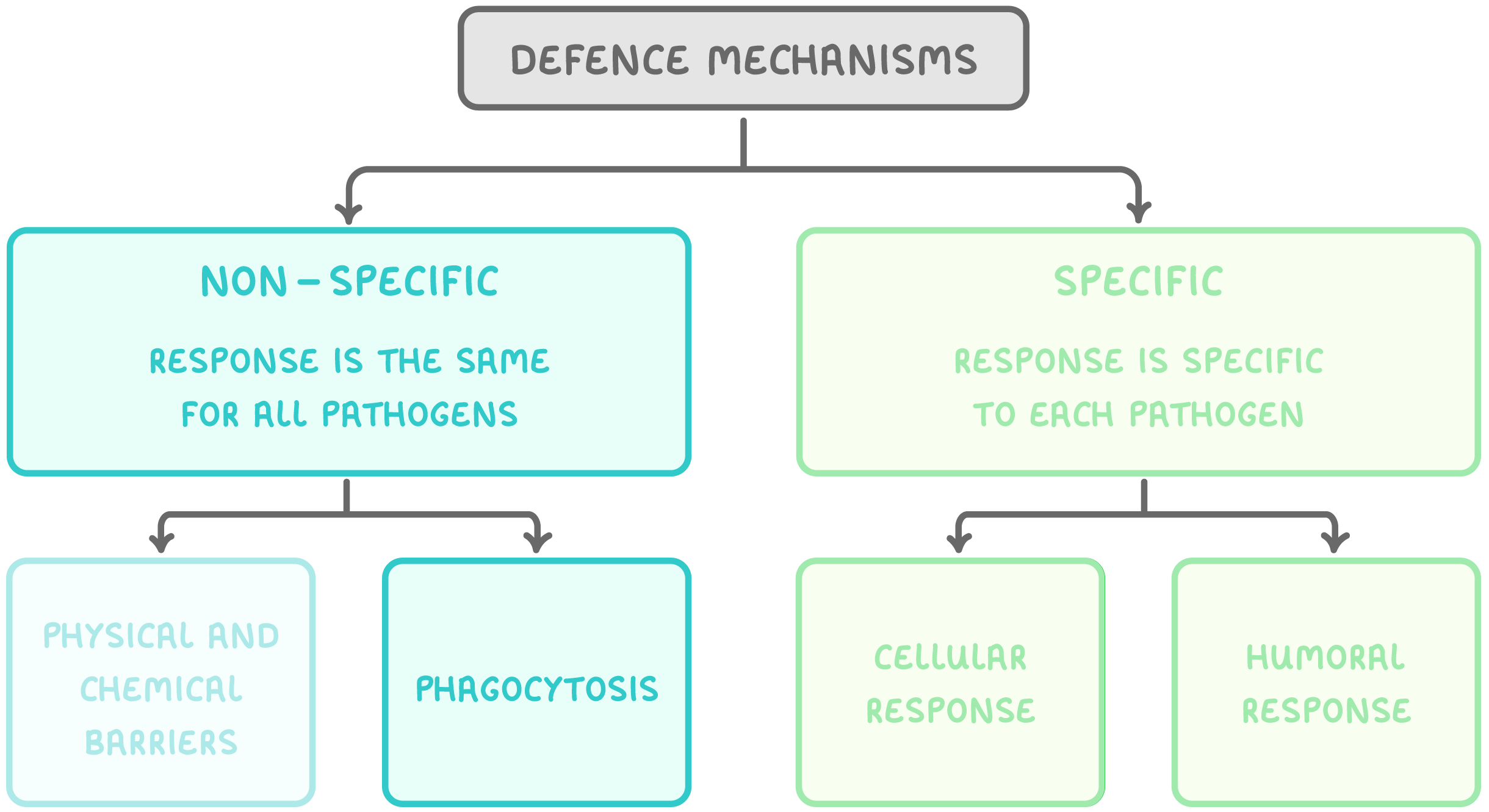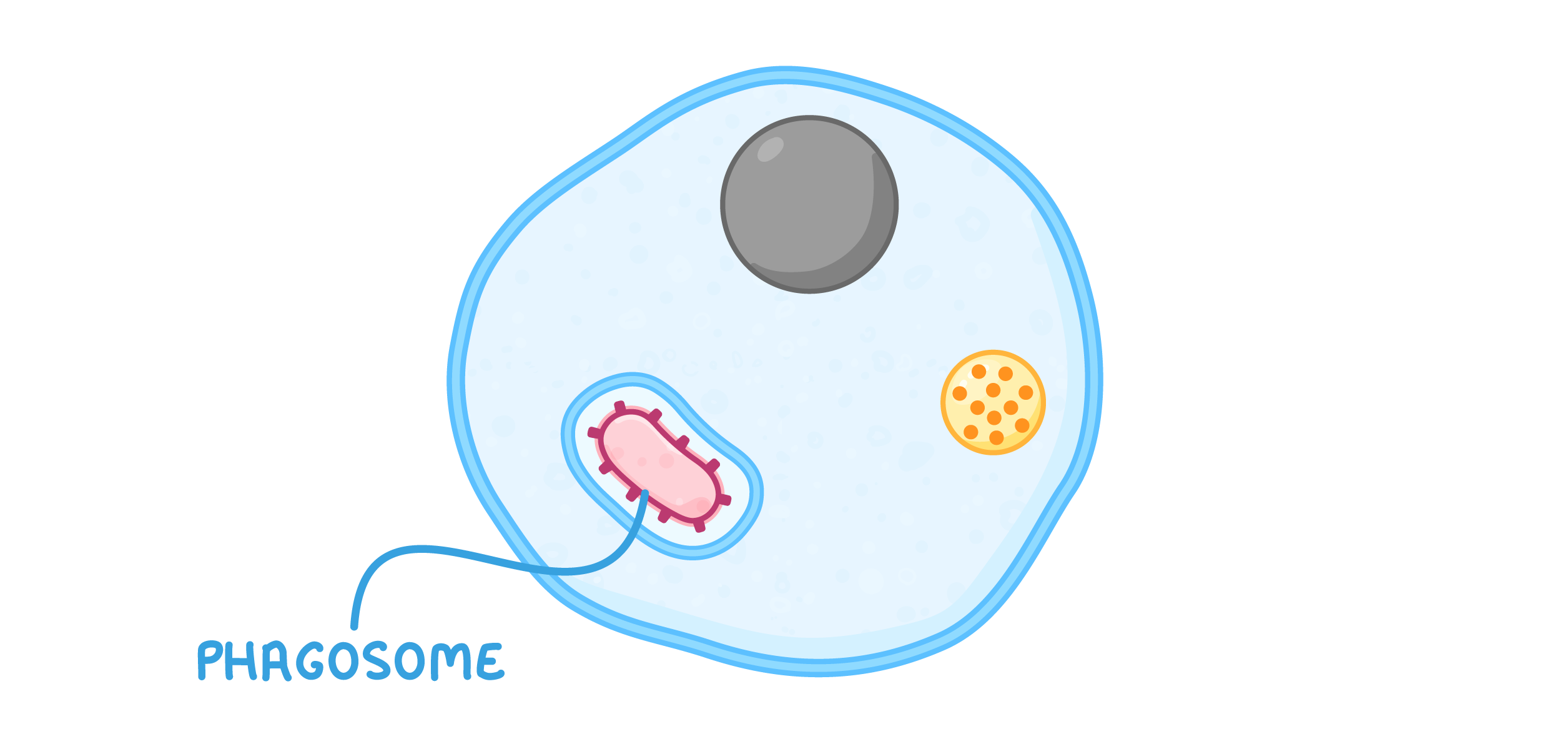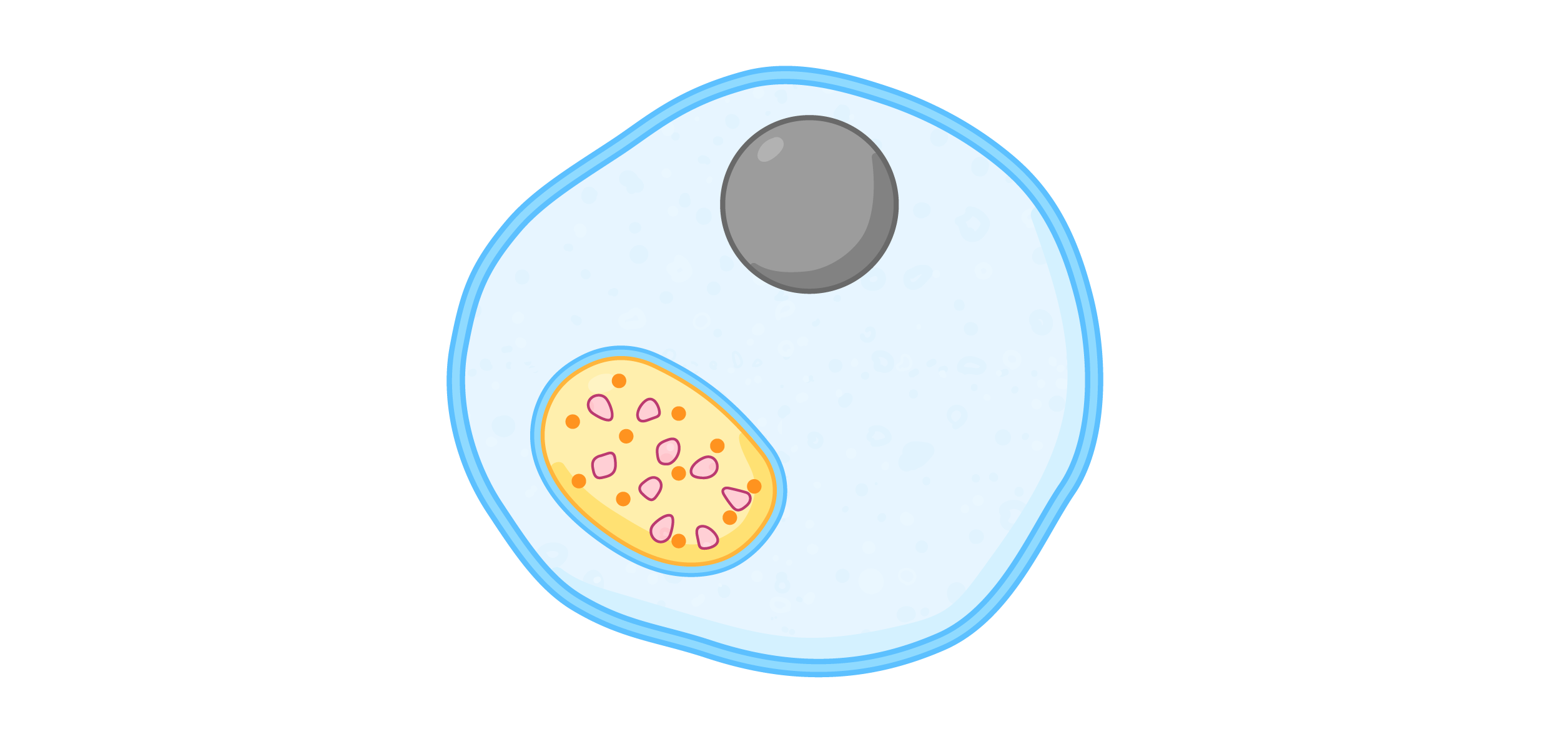Cells of the Immune System: Phagocytes
This lesson covers:
- The role of phagocytes in the immune response
- The process of phagocytosis
Phagocytes Phagocytosis is a type of non-specific defence involving a type of cell known as a phagocyte.  |
Phagocytes are a type of white blood cell that engulf and destroy pathogens (phagocytosis). They are found in the blood and body tissues of many organisms. There are two main types of phagocyte:
|
Phagocytosis The process of phagocytosis is carried out as follows:  The pathogen releases chemicals that attract a phagocyte. The diagrams above only show one phagocyte and one pathogen, but in reality many phagocytes and many pathogens interact at the same time. |






